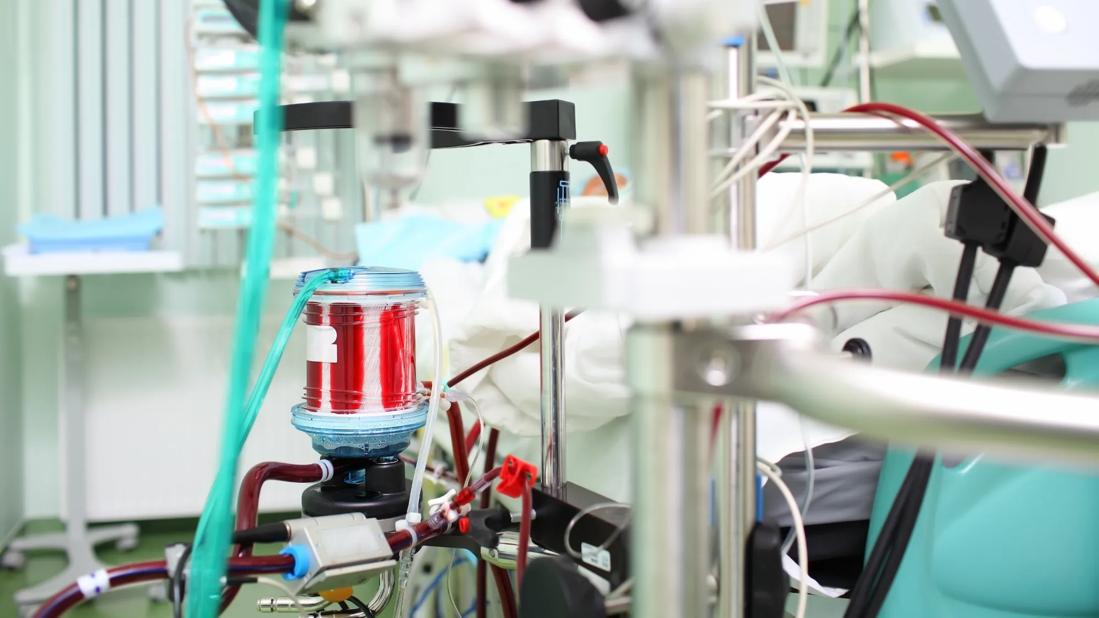Guidelines for the therapy can help conserve resources

Resources are quickly being strained as the COVID-19 pandemic wreaks havoc, and this is especially evident with extracorporeal membrane oxygenation (ECMO). ECMO is a method for cardiopulmonary support for refractory respiratory and cardiac failure. A recent summary from Rizwan Khan, MD, Balaram Anandamurthy, MD, Kenneth McCurry, MD, and Sudhir Krishnan, MD, discusses strategies for when to use ECMO, who to treat with ECMO, and how to conserve provisions. The summary appeared in a collection of COVID-19 Curbside Consults from Cleveland Clinic Journal of Medicine.
Advertisement
Cleveland Clinic is a non-profit academic medical center. Advertising on our site helps support our mission. We do not endorse non-Cleveland Clinic products or services. Policy
There are two main types of ECMO: venovenous ECMO and venoarterial ECMO. Venovenous ECMO is used to correct hypoxemia and hypercarbia. Venoarterial, on the other hand, provides cardiac and circulatory support plus oxygenation. Because COVID-19 can lead to acute respiratory distress syndrome (ARDS) in certain patients, ECMO may be the only available option if conventional therapy (mechanical ventilation) fails. As the authors note, several prior studies intimated the feasibility of ECMO among severe respiratory cases during prior epidemics (2009 H1N1, 2014 MERS-CoV), but the role of ECMO in the management is unclear; one study from China reported that upwards of 80% of patients receiving ECMO died, while another study from Japan found that over 50% of patients on ECMO recovered. It is worth noting that both studies were fairly small with 17 and 40 participants, respectively.
In addition to the uncertainty of the effectiveness of ECMO, there are several drawbacks to the therapy. These include: limited role as cardiac support, associations with thrombosis, logistic challenges, limited medical resources, infection risk in caregivers and limited utility in multiorgan failure. The authors provide deeper insight into these drawbacks, along with a list of indications and contraindications for the therapy, in the full summary, available here.
When determining whether ECMO is a viable treatment option for a patient, the authors note that a triage guideline should be followed. Priority should be given to younger patients without comorbidities who are likely to need ECMO only for a short time and are likely to survive. It is also advised to cluster eligible patients (severe ARDS or early transfer) at expert centers where ECMO resources are available when possible. Ideally, patients should be triaged to ECMO therapy based on primary criteria (likelihood of survival and short-term need of ECMO) along with secondary criteria (expected duration and quality of life following ECMO). However, there are no published guidelines that list selection criteria or duration of life support specifically for COVID-19-associated ARDS. Rather, these suggested guidelines are based on data from the MERS, SARS and H1N1 pandemics.
Advertisement
Drs. Khan, Anandamurthy, McCurry and Krishnan’s full article with references from Cleveland Clinic Journal of Medicine’s COVID-19 Curbside Consults is available here.
Advertisement
Advertisement

Patients report improved sense of smell and taste

Clinicians who are accustomed to uncertainty can do well by patients

Unique skin changes can occur after infection or vaccine

Cleveland Clinic analysis suggests that obtaining care for the virus might reveal a previously undiagnosed condition

As the pandemic evolves, rheumatologists must continue to be mindful of most vulnerable patients

Early results suggest positive outcomes from COVID-19 PrEP treatment

Could the virus have caused the condition or triggered previously undiagnosed disease?

Five categories of cutaneous abnormalities are associated with COVID-19